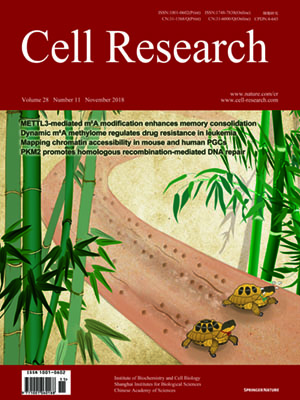
Advanced Search
Submit Manuscript
Advanced Search
Submit Manuscript
Volume 28, No 11, Nov 2018
ISSN: 1001-0602
EISSN: 1748-7838 2018
impact factor 17.848*
(Clarivate Analytics, 2019)
Volume 28 Issue 11, November 2018: 1121-1123
Yangyang Feng 1, Yuan Tian 1, Zihan Wu 1 and Yanhui Xu 1,2,3,4
1Fudan University Shanghai Cancer Center, Key Laboratory of Medical Epigenetics and Metabolism, Institute of Biomedical Sciences,Shanghai Medical College of Fudan University, Shanghai 200032,China; 2Key Laboratory of Molecular Medicine, Ministry of Education,Department of Systems Biology for Medicine, School of Basic Medical Sciences, Shanghai Medical College of Fudan University, Shanghai 200032, China; 3State Key Laboratory of Genetic Engineering,Collaborative Innovation Center of Genetics and Development,School of Life Sciences, Fudan University, Shanghai 200433, China and 4CAS Center for Excellence in Molecular Cell Science, Chinese Academy of Sciences, Shanghai 200031, China
https://doi.org/10.1038/s41422-018-0102-y